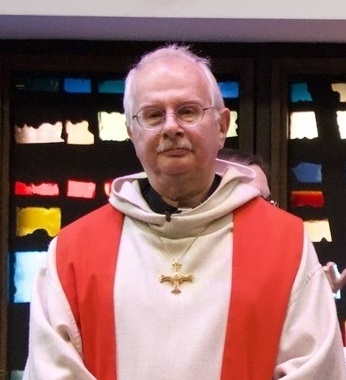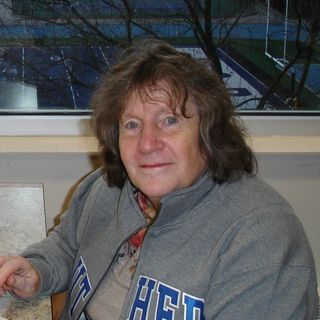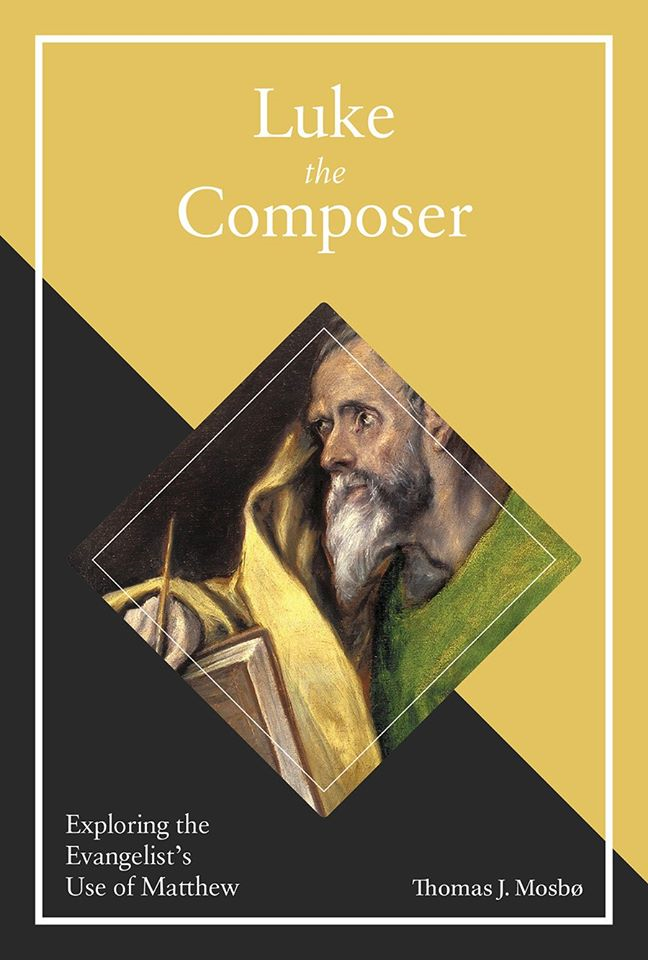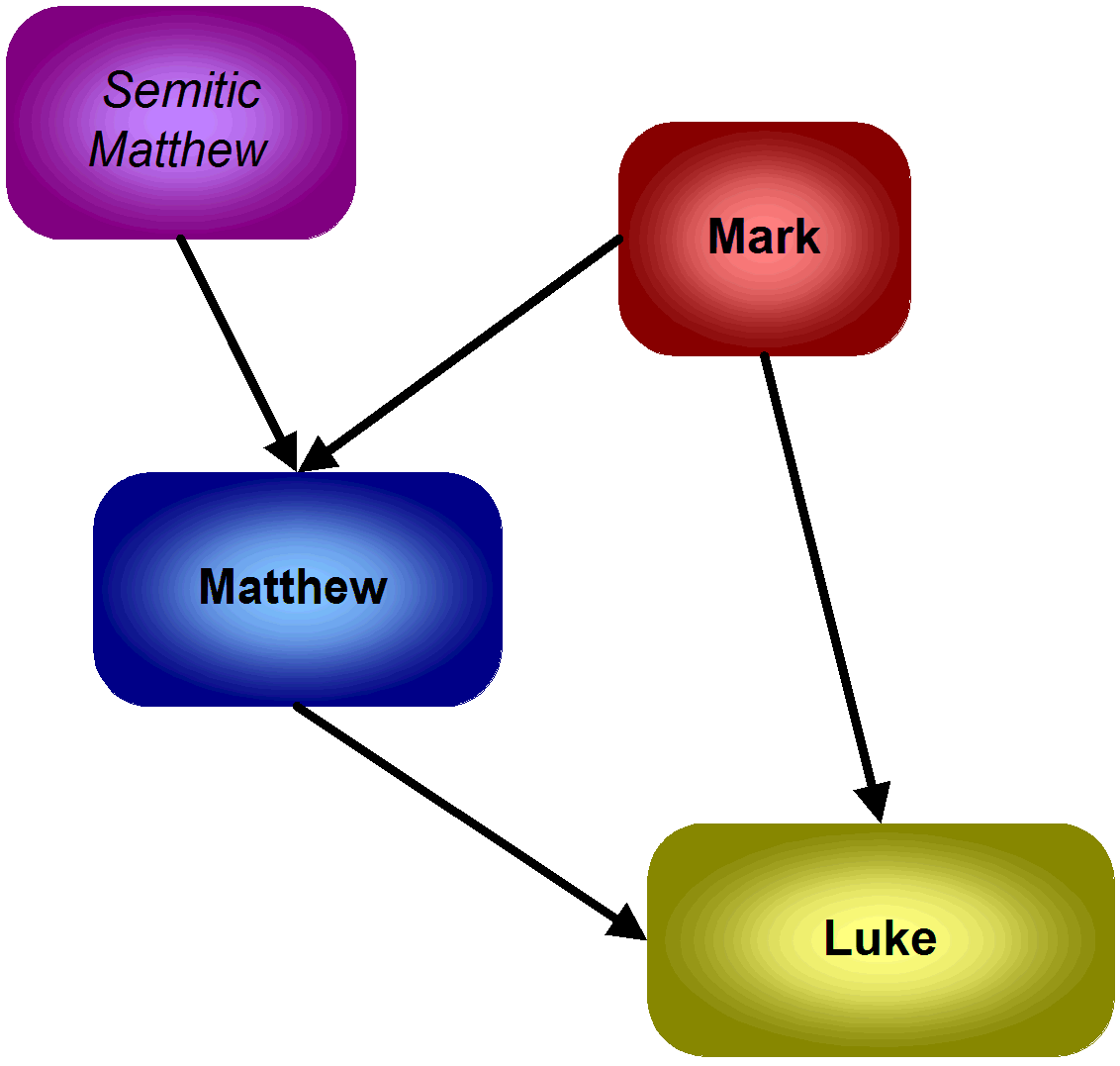Our Pastor: Reverend Thomas J. Mosbø

Rev. Mosbø grew up on a farm in Rembrandt, Iowa, and was baptized and confirmed there at Our Saviour's Lutheran Church. He received a Bachelor of Arts degree in Philosophy and Religion from Luther College in Decorah, Iowa, where he also met his future wife, Coral. They were married in Rembrandt in 1975. He then received a Master of Arts degree in Theology from Wartburg Seminary in Dubuque, Iowa. They raised their son, Christian, and two daughters, Rachel and Arwen, in Milton, Wisconsin. Thomas and Coral, along with Arwen, then had the opportunity to live in England for 17 years. Arwen and Rachel were both married there, and now live in Wisconsin with the 7 grandchildren they have given their parents. Thomas and Coral have lived in Galena, Illinois, since 2017.
In addition to the Bible, Rev. Mosbø draws inspiration from the Celtic Saints, Saint Francis of Assisi, and modern Christian authors such as C.S. Lewis and J.R.R. Tolkien. He was ordained as a Minister of Word and Sacrament in the ELCA on Epiphany, 2024.
The Pastor's Wife

Coral Joan Fay was raised in Baldwin, Long Island, New York, and was baptized and confirmed there at Bethlehem Lutheran Church. She attended Luther College where she studied Art and Religion, and where she met her future husband, Thomas. She supports her husband in his ministry and continues to use her creative abilities in Christian service, including crocheting Prayer Shawls and Afghans.
For examples of Coral's artwork and other creative endeavors, please visit her Wyndstar Artworks website.
Luke the Composer

For several years during their stay in England, Rev. and Mrs. Mosbø were privileged to be members of the Durham Cathedral Community, and it was there that Thomas wrote a major work, The Gospel and the Apostles, in which he examines the writing of the entire New Testament. A portion of this work, Luke the Composer: Exploring the Evangelist’s Use of Matthew, was published by Fortress Press in 2017. In this book, Rev. Mosbø looks in detail at the evidence that Luke used both Matthew and Mark as direct sources for his own Gospel. The resultant theory of how these three Gospels (known as the Synoptics) came to be written may be illustrated as follows:

The Writing of the Synoptic Gospels
In detail, what this theory suggests is that in the very early years of the Christian church, around the year AD 40, the apostle Matthew wrote a brief Gospel in Hebrew or Aramaic ("Semitic Matthew"), probably in Jerusalem. Shortly after this, and completely independently of Matthew, Mark (who was Peter's assistant) wrote his Gospel in Greek, based on Peter's recollections. By about the year AD 50, these two Gospels had found their way to Antioch (along with Mark himself and Paul), where an unknown author translated Semitic Matthew into Greek, but combined it with passages from Mark. This new version of Matthew became the most important document in the early church, was taken by Paul on his journeys throughout the Roman Empire (and quoted loosely in most of his letters), and is now the first book in the New Testament.
Then, in the early 60s, Luke, a travelling companion of both Paul and Mark, used both Greek Matthew and Mark as direct sources for his own Gospel, along with interviews of eyewitnesses of Jesus' life, written while Paul was in prison. Then, just a few years later (by AD 67), Jesus' favorite disciple, John the son of Zebedee, familiar with all three Synoptic Gospels, and now living in Ephesus, wrote his own unique testimony of the teachings, ministry, death, and resurrection of Jesus, the fourth of the Gospels.
What this means for us practically is that these four Gospels can be trusted as historiclly accurate accounts of the teachings and life of Jesus of Nazareth, as recounted by those who spent several hours a day with him for several years memorizing his teachings, and who were eyewitnesses of his life, death, and resurrection.
Sacred Songs
Rev. Thomas J. Mosbø has also composed a number of musical pieces expressing aspects of our Christian faith. The following song was written and recorded as a Lenten meditation, in which all of the music was generated using the computer program Finale, and all vocals were sung by himself. The images and video were designed by his wife, Coral J. F. Mosbø.
Grant Us Peace
More Samples
Here are more examples of inspirational music composed and recorded by Rev. Mosbø. In every case, the insturments were produced on computer, with multiple vocal tracks all sung by Thomas.
Grace And Truth
A Christmas carol arranged for handbells, organ, cello, and choir:
Halleluyah
A doxology in Hebrew similar to the Gloria Patri. The middle portion may be translated as "Praise Yahweh, Lord, God Most High - the Father, and Jesus Christ, and the Holy Spirit, Three in One - Praise God":
Te Deum (You Are God)
A traditional text arranged for church organ and rock band. (The translation of the text was adapted from the International Consultation on English Texts):
We Are One
Celebrating the Celtic Saints:
Canticle Of The Sun
Based on Saint Francis of Assisi's hymn, arranged for string quartet, reed trio, brass trio, and choir:
All music, lyrics [except the Te Deum], and recordings copyright © 2022-2024 Thomas J. Mosbø